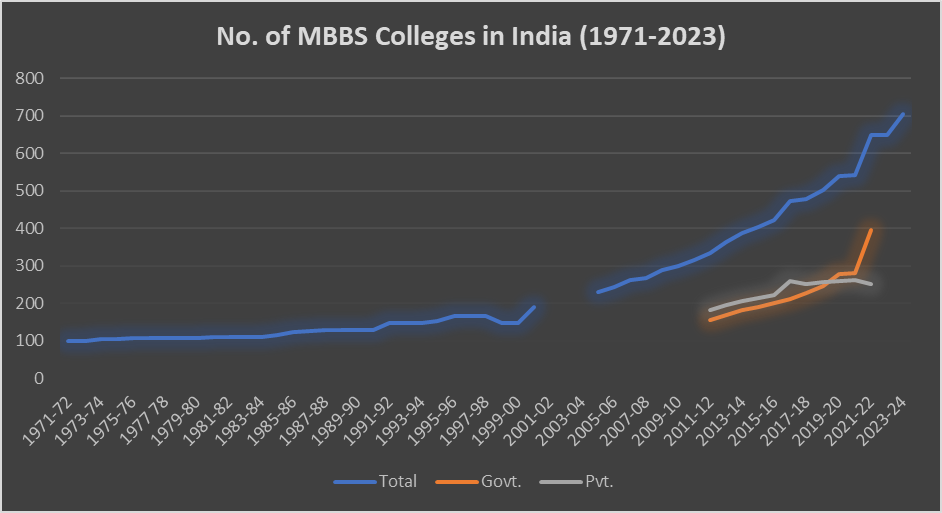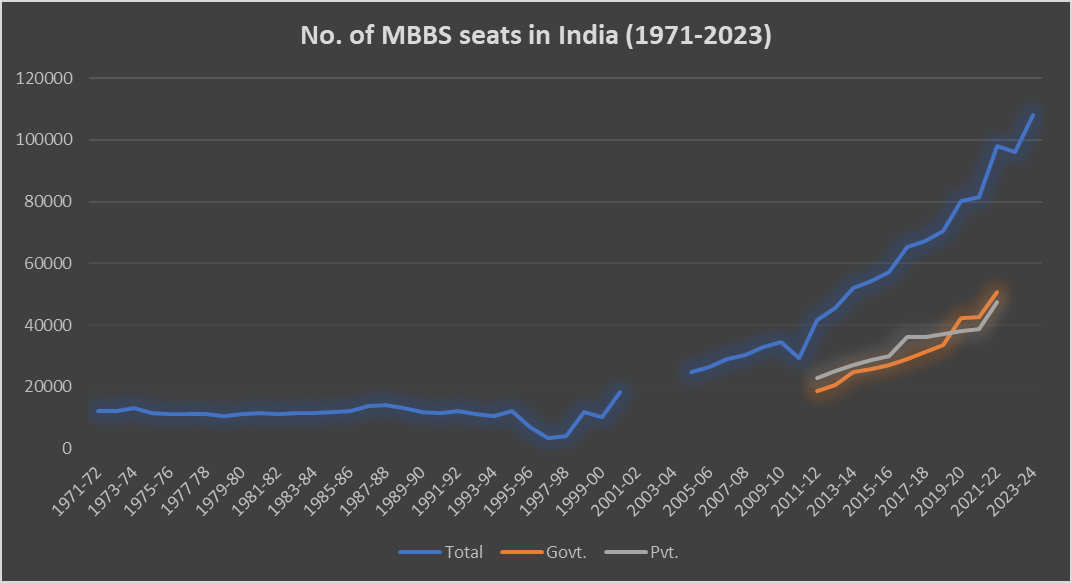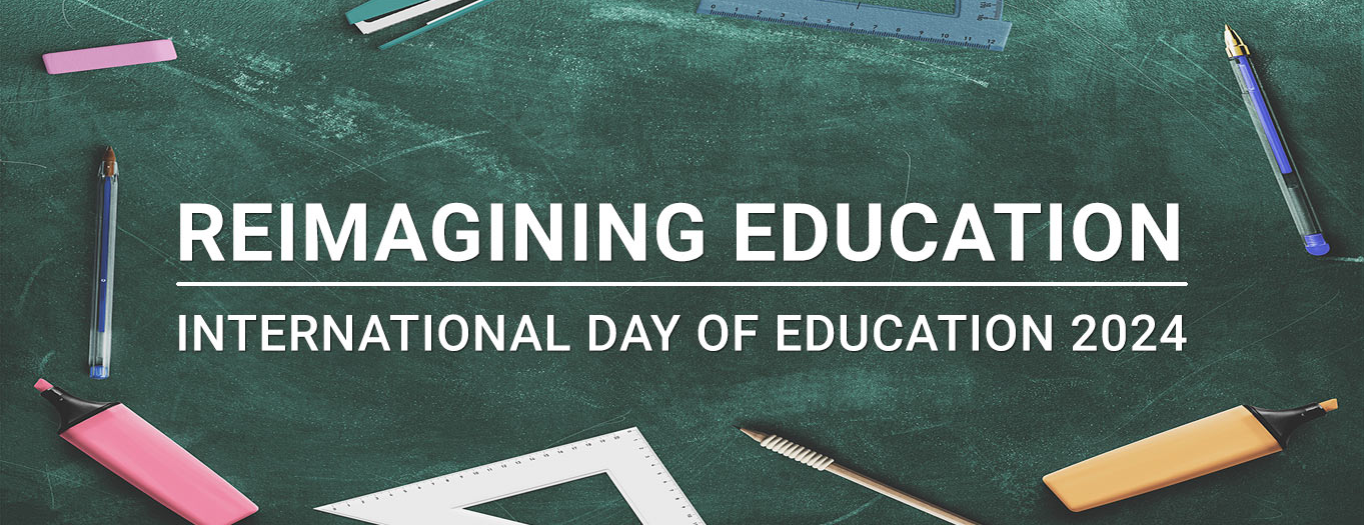
This essay is part of the series “Reimaging Education | International Day of Education 2024”.
Historically, a majority of doctors in India have come from relatively better-off sections of the society due to various entry barriers, and limited opportunities. The rural regions of India have faced a persistent shortage of healthcare workers, a situation attributed to several factors. Private-sector health professionals are often reluctant to work in rural areas, while the public sector struggles to attract and staff these locations adequately. Given the aspirations of the professional class, urban areas are more attractive to health workers for various reasons: the potential for higher earnings, better working conditions including access to advanced equipment and facilities, superior living standards, safe environments, and enhanced educational opportunities for their children. Additionally, the aspiration among many medical graduates for postgraduate specialisation often leads them away from immediate entry into the job market, particularly in public sector roles in rural settings. Moreover, the lure of higher salaries in the private sector compared to the public sector serves as a further disincentive for doctors to engage in the public health system.
The aspiration among many medical graduates for postgraduate specialisation often leads them away from immediate entry into the job market, particularly in public sector roles in rural settings.
Starting from the 1980s, despite a surge in the number of medical colleges, particularly in the private sector, and the number of available medical seats, access to medical care in many underdeveloped areas within India did not improve to the extent expected due to remaining staff shortages. The privatisation of medical education in the past, while expanding opportunities, also introduced challenges such as high tuition fees and capitation, making medical education less accessible to students from lower socio-economic backgrounds.
However, the landscape of medical education in India is undergoing a paradigm shift, particularly in the last decade, marked by a significant transition from a predominantly private sector-dominated space to an increasingly robust public infrastructure. This essay, using the example of the graduate medical degree, explores this transformation, emphasising the role of public medical colleges in democratising medical education and enhancing healthcare accessibility in India.
Historical context
Studies have shown that in India, the expansion of the public medical training sector reached a standstill after the 1970s. Conversely, the private sector experienced robust growth from the 1980s onwards. Initially, private medical schools began in Southern India during the 1960s and expanded to the North in the 1970s. While public sector schools also increased during this period, the 1990s saw a surge in private institutions in both the well-performing Northern provinces and the Southern peninsula. Post-1990s, private medical schools also emerged in the less affluent provinces. By 2010, the private sector not only had more medical colleges but also a higher student intake than the public sector, making financial capacity a crucial factor in accessing medical education in India. From 2010 onwards, private sector dominance in medical education had become the new normal.
While public sector schools also increased during this period, the 1990s saw a surge in private institutions in both the well-performing Northern provinces and the Southern peninsula.
Following the stagnation in public medical education and the rise of private institutions in India from the 1980s, a notable trend emerged among graduates from top-tier medical colleges, particularly those considered the nation's finest. A study conducted at India's leading medical college between 1989 and 2000 revealed a striking trend: more than half (54 percent) of its graduates pursued opportunities abroad, predominantly in the United States (US). This high migration rate underscores a crucial aspect of India's medical education landscape, where the most prestigious institutions often serve as springboards for careers overseas, especially in developed countries. This phenomenon not only highlights the global mobility of Indian medical graduates but also underscores the challenges faced by India in retaining top medical talent, which is often drawn to better prospects and advanced research opportunities abroad.
What does available data say?
The evolution of medical colleges in India from the data provided indicates a significant expansion, particularly from the 2000s onward. From the 1970s, the growth of medical colleges was gradual, with the total number of medical colleges increasing modestly from 98 in 1971 to around 107 by the end of the decade. Just 21 medical colleges were added in the 1980s, and another 19 were added in the 1990s. While data disaggregated for public and private sector medical colleges are unavailable in the public domain, research indicates that it was during this time of public sector stagnation, that the private sector growth in medical education started.
The growth of medical colleges was gradual, with the total number of medical colleges increasing modestly from 98 in 1971 to around 107 by the end of the decade. Just 21 medical colleges were added in the 1980s, and another 19 were added in the 1990s.
The real surge in numbers began in the 21st century, with the figures more than doubling from 147 in 1990–00 to 300 by 2009–10, and then again increasing to 704 by 2023-24. The later part of this growth over the last decade, as evident from Figure 1, aligns with India's commitment to enhancing its public healthcare infrastructure and addressing the physician-to-population ratio, which is a crucial part of improving healthcare delivery. The current government's efforts to build new public medical colleges have been the key contributor to this upsurge, reflecting a broader trend of educational expansion in response to the nation's growing demand for medical professionals. Reversing a dominant trend in the previous decade, the total number of public medical colleges overtook the number of private medical colleges in the country in 2019-20.
Figure 1: Growth in number of MBBS Colleges in India Source: Compiled by author from multiple government sources

Source: Compiled by author from multiple government sources
The trajectory of MBBS seats in India as shown in Figure 2 reveals a parallel increase in the growth in the number of colleges. In the early 1970s, the number of MBBS seats was just over 12,000, reflecting the limited capacity of medical education at the time, predominantly in the public sector. This number remained relatively stagnant until the late 1990s. However, from the 2000s, there was a marked increase, with seats rising to 18,168 by 2000-01 and then experiencing a remarkable jump to 29,263 by 2010-11. By 2023-24, the total MBBS seats available had reached an impressive count of 1,07,948. Mirroring the trend of the number of medical colleges the total number of MBBS seats in the public medical colleges overtook those in private medical colleges in the country in 2019-20.
Figure 2: Growth in the number of MBBS seats in India

Source: Compiled by author from multiple government sources
This rapid expansion in the last decade, powered by infrastructure created in the public sector, not only indicates India's response to the shortage of healthcare professionals but also signifies the nation's broader strategy to fortify its healthcare system through enhanced public sector medical education and training. The substantial increase in seats, particularly in the public sector where they nearly tripled over the last decade, is likely a direct response to the growing population and the need to improve healthcare services, especially in rural and underserved areas. This marks a clear reversal of a policy shift in the 1980s that encouraged public-sector stagnation and private-sector involvement, leading to a rapid proliferation of private medical colleges.
The turning point in this trajectory came with the government's renewed focus on strengthening public medical education infrastructure. Recent years have seen a concerted effort to establish new government medical colleges and expand existing ones. This has not only increased the total number of MBBS seats but also ensured a more equitable distribution across various regions, particularly in rural and underserved areas. This initiative aims to address the critical shortage of healthcare professionals and to bolster the healthcare infrastructure across the country. Since 2014, a remarkable number of 317 new public sector medical colleges have been established, which has expanded the opportunities for aspiring medical professionals and has contributed significantly to the number of healthcare institutions in the country. Between 2020 and 2021 alone, according to government data, the number of public sector medical colleges increased from 280 to 396.
The way forward
One of the most likely impacts of this recent public infrastructure expansion is the democratisation of medical education. By making MBBS seats more accessible to a wider demographic, the government could effectively reduce the socio-economic barriers that have traditionally hindered equal access to medical education. This inclusivity is crucial for fostering a diverse medical workforce that reflects the varied needs of India's population. Moreover, the increased number of public medical colleges and seats has implications for healthcare delivery, especially in rural and underserved areas. Graduates from public medical colleges are more likely to serve in these regions, addressing the acute shortage of healthcare professionals and improving the overall quality of healthcare services. This aligns with the government's goal of achieving universal health coverage and ensuring equitable healthcare for all.
Graduates from public medical colleges are more likely to serve in these regions, addressing the acute shortage of healthcare professionals and improving the overall quality of healthcare services.
The Indian government's initiatives in enhancing the medical education infrastructure resonate with the objectives of the International Day of Education, which aims to recognise the role of education in peace and development. By increasing the number of medical colleges and subsequently the healthcare workforce, India is working towards ensuring enhanced healthcare access for its population, a step that is critical for the nation's development and well-being. The establishment of these institutions not only provides educational opportunities but also brings medical services closer to the communities in need, thus contributing to the overarching goal of equitable access to quality education and healthcare.
Oommen C. Kurian is Senior Fellow and Head of Health Initiative at the Observer Research Foundation
The author would like to thank Mona for assisting with the compilation of data.
The views expressed above belong to the author(s). ORF research and analyses now available on Telegram! Click here to access our curated content — blogs, longforms and interviews.






 PREV
PREV



